Architectural Digest | The 18 Most Secluded Resorts in the World
Article Information & Social Sharing
Article by Dan Avery to Architectural Digest
In a world of global connectivity, getting away from it all can seem like an impossibility. But for some travelers, there is a class of five-star resorts working to provide peaceful solitude without asking you to sacrifice luxury and comfort. Legendary hotel designer Bill Bensley has been at the forefront of this movement, creating award-winning remote getaways in places like Vietnam, Thailand, and Bali (and soon, North Congo). “The majority of projects I choose are places I’ve never been,” Bensley told AD. “You wont find a lobby full of flowers, for example. Savvy travelers don’t care about those things anymore,” Bensley explains. “They want to discover new trails or the best place to catch a boat to see kingfishers. These are life-changing experiences that are a hell of a lot more important what kind of flowers are in the lobby.” After all, what modern amenities can compete with an underwater suite in the Maldives or meditating in a 14th-century monastery? Below, AD has scoured the globe to bring you the world’s most beautiful secluded getaways.
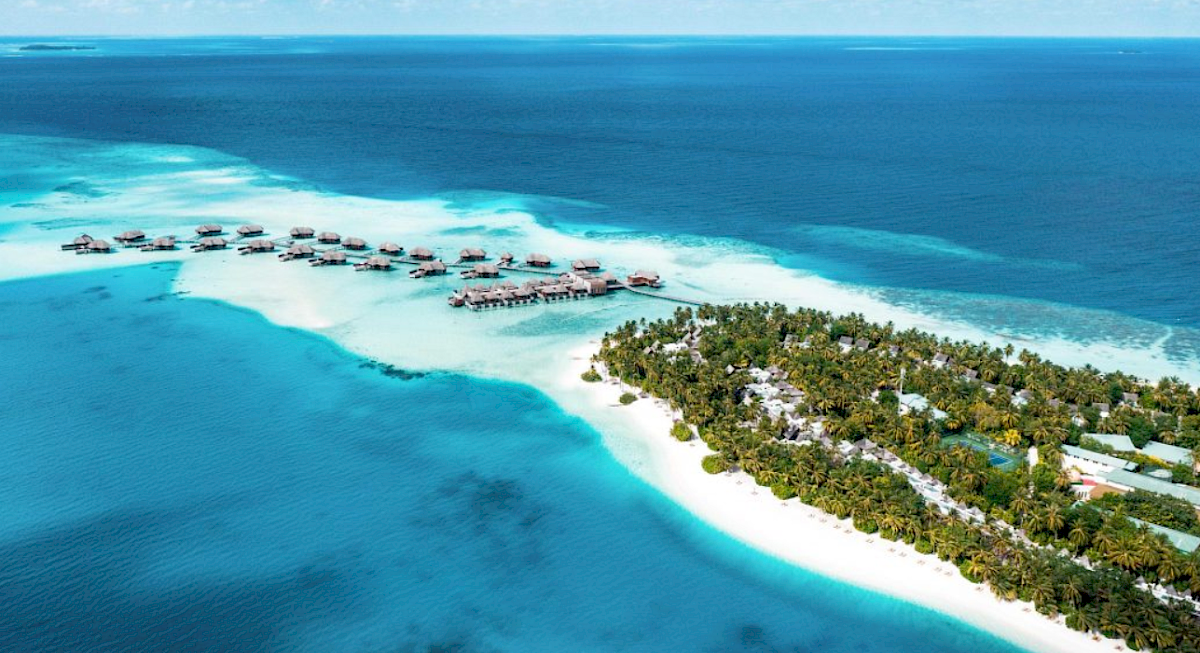
The Muraka at Conrad Maldives Rangali Island (South Ari Atoll, Maldives)
Plenty of resorts offer cabins on the water—but how about under the water? Part of the Conrad’s Rangali Island resort in the Maldives, The Muraka is an ultra-private two-story residence with a master bedroom submerged 16 feet beneath the Indian Ocean under a clear acrylic dome. Drift off to sleep with spectacular 180-degree views of manta rays, whale sharks, and other sea creatures. A stay in The Muraka also includes an outdoor deck with infinity pool, access to a private speed boat and jet skis and use of a personal chef and butler.
Explora Rapa Nui (Isla de Pascua, Chile)
It doesn’t get more secluded than this 30-room resort more than 2,300 miles off the coast of Chile. Rooms in the Posada de Mike Rapu Lodge, which was designed by Chilean architect José Cruz Ovalle to echo the landscape, do not have televisions or internet access. But you can choose from a variety of small-group activities—such as snorkeling, hiking, bike riding—or walk to the nearby moai, the island’s mysterious stone statues. You can also indulge in a luxurious spa treatment or simply stroll the swath of Pacific beachfront and untouched grasslands that butt up against the property.
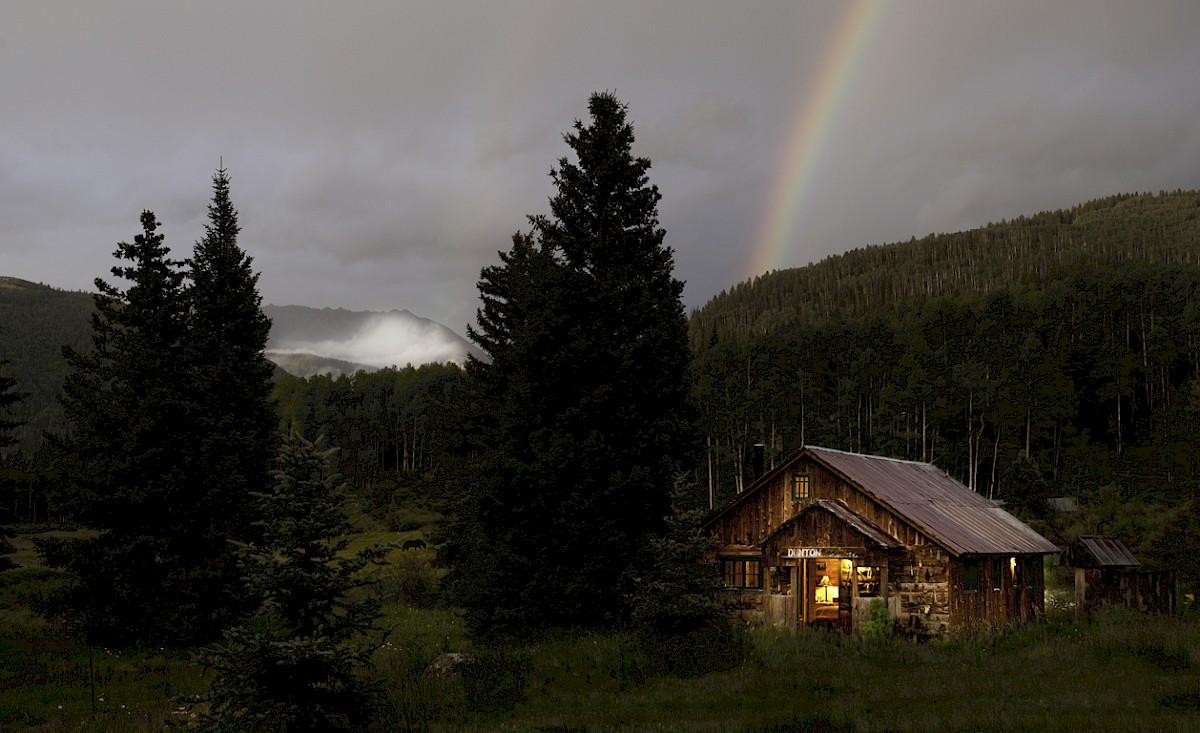
Dunton Hot Springs (Dunton, Colorado)
In the 1880s, Dunton was a thriving mining town in the San Juan Mountains of Colorado. Today its an upscale resort with modern amenities like spa treatments and heli-skiing. But it maintains a rustic ambiance with 12 painstakingly restored cabins named for the miners who built them or the purpose they served. (One cabin, the former general store, has a private hot spring available in the summer.) There’s also a vineyard, a yoga studio—housed in the mining camp’s old brothel—and a saloon, where Butch Cassidy reportedly satisfied his thirst after robbing his first bank.
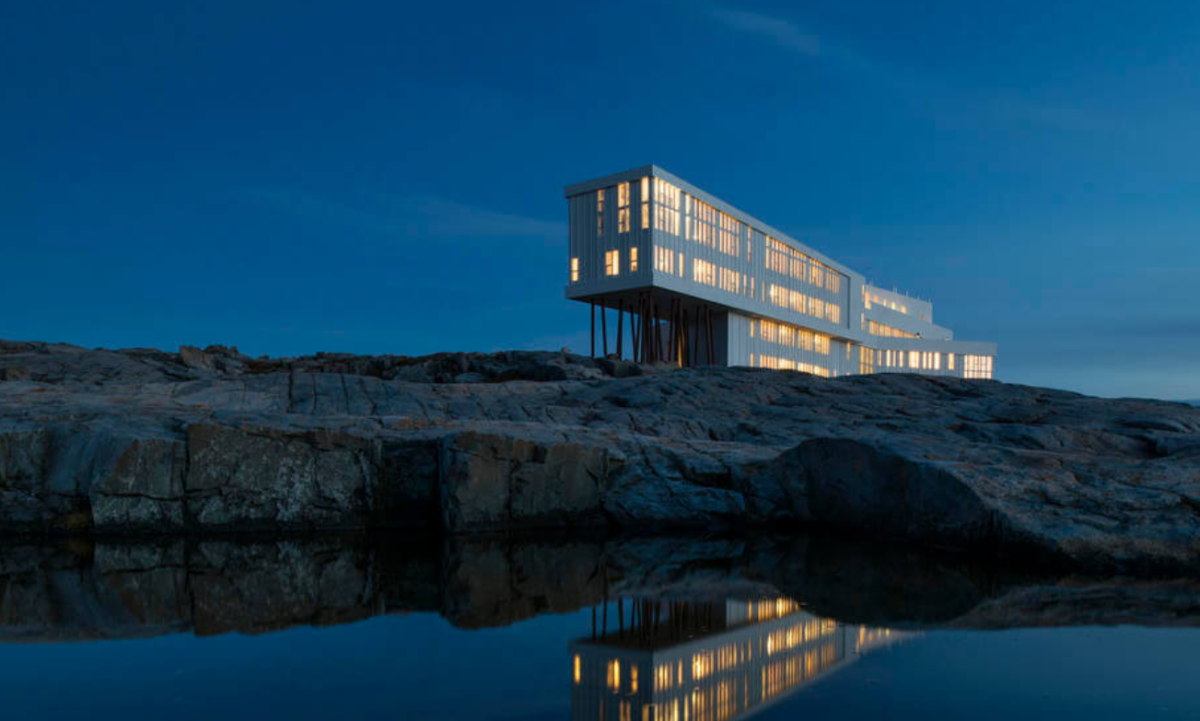
Fogo Island Inn (Joe Batt’s Arm, Newfoundland and Labrador, Canada)
Having grown up on Fogo Island, Canadian entrepreneur Zita Cobb returned decades later to open this high-end lodge designed by architect Todd Saunders to mirror the island’s jagged landscape. The resort’s 29 rooms sit atop stilts, a nod to traditional Newfoundland building design, and offer floor-to-ceiling windows with breathtaking views of the North Atlantic. Though four times the size of Manhattan, Fogo Island only has a year-round population of less than 2,500 people—an ideal locale for solitude and contemplation. No wonder the inn has drawn celebrities like Gwyneth Paltrow, David Letterman and Canadian Prime Minister Justin Trudeau.
The Eremito Hotel (Parrano, Italy)
Hotelier Marcello Murzilli transformed this 14th-century monastery into an Internet-free eco-oasis in the Umbrian valley. His hotel is one of the few exclusively for solo travelers: The 21 rooms—“celluzze” (cells) once used by the monks—have single beds with handmade hemp blankets. Most illumination in the Eremito comes from candlelight and, in another nod to the inn’s monastic roots, dinner—vegetarian cuisine made from seasonal produce—is eaten in silence at a common table.
Jade Screen Hotel (Huangshan, China)
It’s a 60,000-step climb to reach this mountaintop hotel in China’s Huangshan mountains—or you can ride a cable car and focus on the breathtaking views. (You could also hire porters to carry you up in a wicker chair.) Opened in 1955, the Jade Screen (“Yupinglou”) has 65 rooms, as well as a massage room, sauna, and two restaurants serving both Chinese and Western cuisine. But it’s not the accommodations travelers from around the world come for. It’s the views—from 6,100-foot high Lotus Peak, the tallest mountain the region, to Guest-greeting Pine, an 800-year-old tree that grows out of a split in the Green Lion Rock. From Guest-greeting Pine, it’s a steep 90-minute hike to the summit of Celestial Capital Peak, the most challenging mountain in Huangshan.
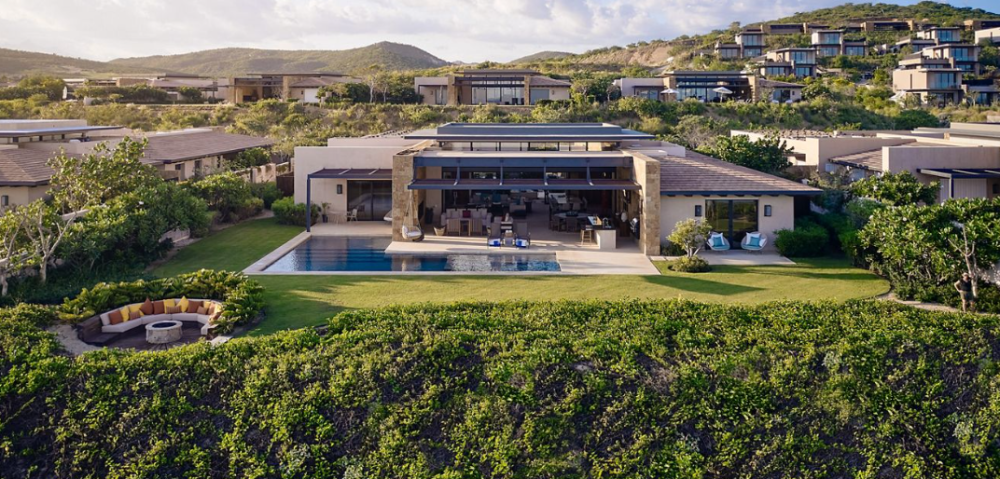
Zadún Ritz-Carlton (Los Cabos, Mexico)
Named for the sloping sand dunes it sits on, Zadún is one of only five properties in the ultra-exclusive Ritz-Carlton Reserve collection—and the first in Mexico, offering seclusion and sophistication less than an hour from Cabo San Lucas. Nestled between the Sierra de la Laguna Mountains and tranquil blue Sea of Cortez, this desert getaway was designed by ABAX Arquitectos, with decor that spotlights both indigenous handcrafts and modern Mexican design. When you arrive, a Tosoani (private butler) will whisk you off to one of 115 rooms, many of which have private terraces and pools. After you’ve settled, book a sound therapy session at Spa Alkemia or play a few rounds on golf courses designed by Greg Norman and Jack Nicklaus before heading to Humo restaurant for an upscale feast prepared by Argentinian chef Lucas López.
Four Seasons Tented Camp Golden Triangle (Chang Rai, Thailand)
Another Bensley creation, this remote getaway in the jungles of Northern Thailand is located at the confluence of the Mekong and Ruak Rivers in what’s known as the Golden Triangle, where Thailand, Laos, and Myanmar all meet. There are just 15 “tents”—which are actually luxurious bungalows with hardwood floors, handcrafted furnishings and traditional thatched roofs—plus a two-bedroom explorer’s lodge. On-site activities include cocktail classes and massage treatments, but most guests come to meet—and bathe—the elephants who call the region home.
Capella Ubud (Bali, Indonesia)
Dutch troops invaded Bali several times in the 18th century. They were ultimately turned back by the Balinese, but the encounters gave legendary hospitality architect Bill Bensley the idea for this environmentally friendly glampsite opened by Capella in 2020. Each of the two dozens tents is inspired by a different member of a Dutch raiding party—the captain, cartographer, bearer-of-arms, photographer. It also adheres to Bensley’s mission to create accommodations with a light environmental footprint. “We didn’t chop down a single tree to form the topagraphy at all,” he said. Capella Ubud is located in Keliki, an artisans’ village nestled among terraced rice paddy fields, green coconut trees, and the sacred Wos river. While the cabins are staggered along the steep hillside, each is assigned a 24-hour valet to attend to guests’ needs and help them traverse the terrain.

Islas Secas (Chiriquí, Panama)
A privately owned archipelago 20 miles off the southern coast of Panama, this remote luxury eco-lodge is home to just seven thatched-roofed casitas that can accommodate up to 24 people. (Guests are flown in from Panama City aboard the resort’s private plane.) Sustainability is key for Islas Secas owner Louis Bacon, with the 14 islands that comprise the archipelago largely untouched by development. The resort itself runs on solar energy, and uses brown-water irrigation and composted waste. Guests can trek to thermal springs, kayak to mangrove forests or, depending on the time of year, marvel at humpback whales surfacing in the ocean. After a day of adventure, tuck into locally sourced food prepared by chef Saul Umana in Terraza restaurant.
MGallery Yen Tu (Uông Bí, Vietnam)
Vietnamese Buddhism was founded by Emperor Tran Nhan Tong, who renounced his throne in 1299 and founded a monastary in the Yen Tu mountain. It’s here, more than 3,500 feet above sea level, that Legacy Yen Tu opened in 2018, billing itself as a spiritual getaway and wellness retreat. Luxury resort developer Bill Bensley worked closely with Vietnamese historians to create a monastic vibe in the hotel’s 133 rooms. “We used the materials of that era -- rice husks on the walls, latched wooden doors, stone tiles from the nearby valley,” Bensley said. “We even recessed the glass in the windows, because they wouldn’t have had glass back then. What you see are the big traditional wooden shutters.” It’s not all austere, of course: The bright palette in the Thien Tra Lobby Bar represents the regal garments worn by Buddhist monks the day they take their orders. Enjoy a drink—and mountain views—at the bar before indulging in an authentic Vietnamese meal at Tho Quang restaurant.
Mandarin Oriental Canouan (Canouan, St Vincent and the Grenadines)
Located on the pristine white sand of Godahl Beach, this four-year-old resort is home to just 26 suites and 13 villas—offering both privacy and the first-class service jetsetters expect from Mandarin Oriental. Enjoy tennis, hiking or snorkeling in Tobago Cay (where Pirates of the Caribbean was filmed). And even if you don’t golf, the 13th green on the resort’s Tom Fazio-designed golf course offers the best sunset on the island. Lounge chairs are laid out so you can lie back and soak in views of both the Caribbean and Atlantic.
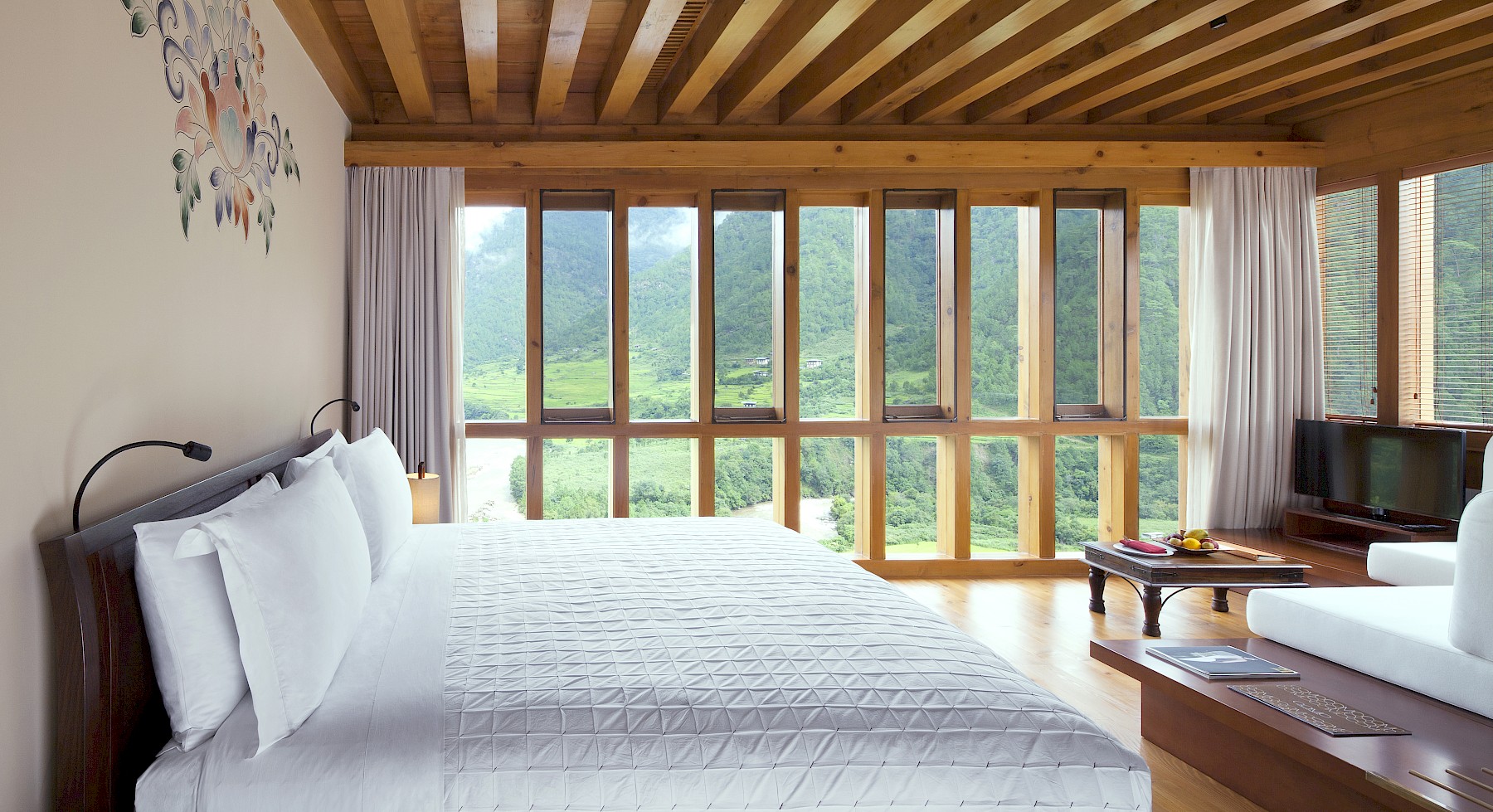
Como Uma Punakha (Punakha, Bhutan)
One of the first luxury chains in Bhutan, Como opened Uma Punakha in September 2012. The 10-room lodge is set into a hillside near the Punakha Dzong, or “palace of great happiness,” and it takes its design cue from the 17th century fortress. The resort attracts spiritual travelers—yoga and meditation sessions are offered on-site and the nearby Chorten Nyingpo Monastery is home to 50 Buddhist monks. But they don’t skimp on luxury, either—from helicopter tours of the Punakha Valley to dining at Bukhari, the in-house restaurant, where the menu ranges from Bhutanese and Indian dishes to international favorites. (The king of Bhutan has been known to drop in for a Wagyu burger.)
Bushmans Kloof Wilderness Reserve and Wellness Retreat (Clanwilliam, South Africa)
It’s a three-hour drive from Capetown to this luxurious retreat in the heart of the Cederberg Mountains—long enough for the worries of the modern world to melt away. The small white buildings of this former 19th-century farm are spread across nearly 19,000 acres, surrounded by the untouched veldt, crystal-clear waterfalls, and wildlife such as antelopes, wildebeest, and rare mountain zebras. Bushmans Kloof is just 30 minutes from Clanwilliam, one of South Africa’s oldest towns and home to ancient bush art dating back 10,000 years. (It’s also known the only place on Earth where rooibos is cultivated, and is renowned for its handmade leather shoes.) Dining at this family-owned lodge is a true adventure—from an al fresco lunch at Makana, featuring vegetables and herbs from the on-site organic garden, to a sunset braai (barbecue) at Kadoro, a restored shepherd’s hut illuminated by lanterns and a roaring campfire. Bushmans Kloof has just 17 rooms and suits, most with patios and fireplaces. Additionally, two secluded villas, the Koro Lodge and Cederberg House, come with their own private swimming pools, personal chefs and local guide.
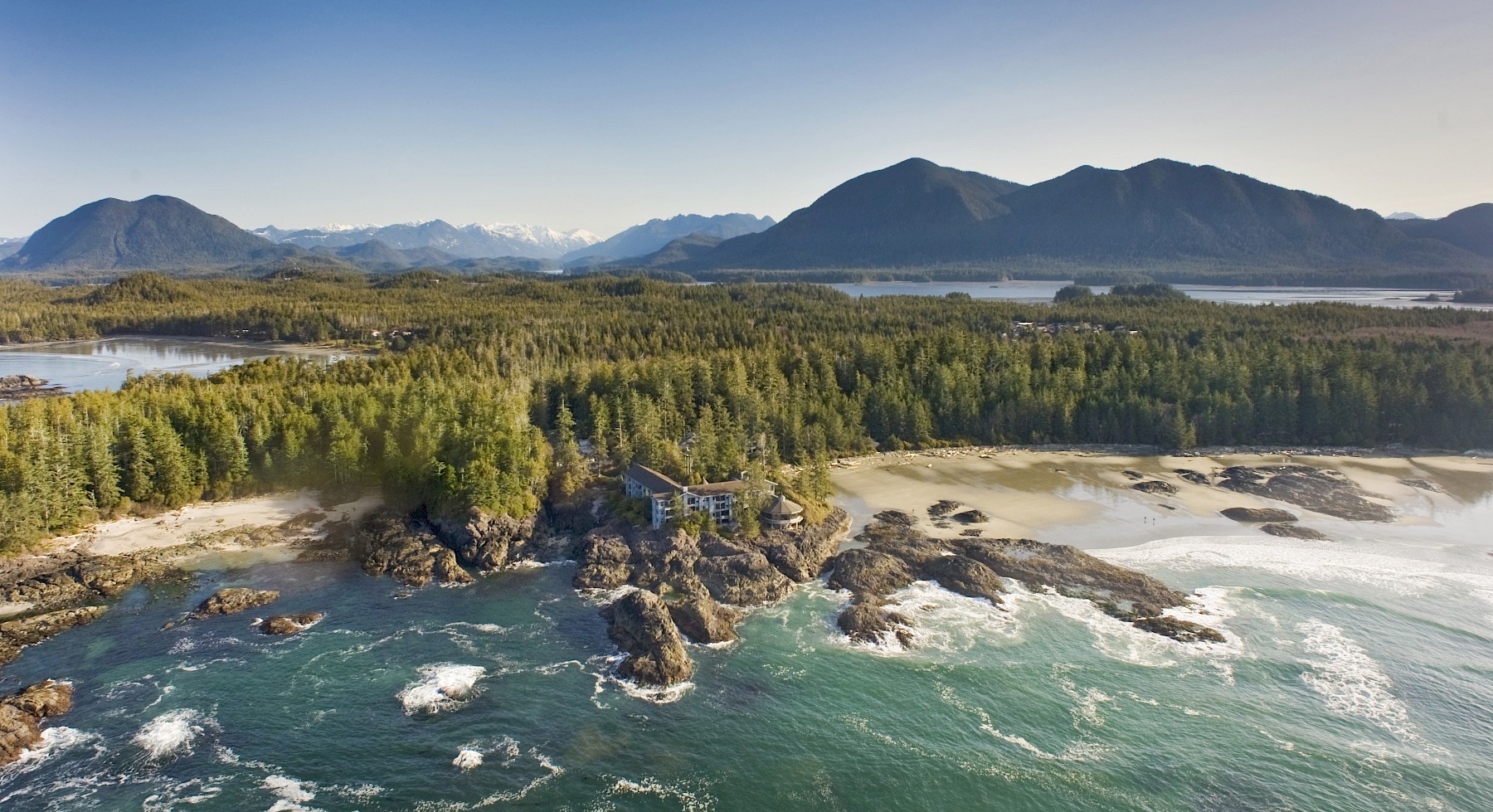
Wickaninnish Inn (Tofino, Canada)
If you like rugged escapes, this Relais & Châteaux lodge wedged between Pacific and old-growth evergreens on the west coast of Vancouver Island is the tops. November to March is peak season for stormwatching—from the comfort of your balcony, of course—as waves up to 30 feet high crash onto the shore. (All 75 rooms face Chesterman Beach and have their own fireplace and soaking tubs too.) Want something more adventurous? The concierge will be only too happy to line you up with an excursion to Clayoquot Sound to view humpback whales, sea lions, and other local marine life. Local artists helped design the Wickaninnish’s two buildings: Woodcarver Henry Nolla produced the inn’s instantly recognizable yellow cedar doors.
One&Only Gorilla’s Nest (Ruhengeri, Rwanda)
Nestled amid swaying eucalyptus trees in the foothills of the Virunga volcano range, this jungle resort is only a five-minute drive from Volcanoes National Park, home to the largest number of mountain gorillas in the world. Guests can choose from among 21 one- and two-bedroom lodges and suites, each with fireplaces and private decks. Book the Ingagi or Silverback suites and receive a complimentary tour of conservation efforts being undertaken by the Dian Fossey Gorilla Fund. The One&Only Spa offers holistic treatments using local plant-based ingredients. In the main restaurant, Nest, executive chef Brandon Souris works on a new menu daily with a focus on Rwandan and African fare.
Hemingways Eden (Nairobi, Kenya)
In 2021, German designer Anna Trebinski transformed her home in Nairobi’s Langata suburb into the boutique hotel-meets-social-club Eden, a living gallery filled with art and artifacts Trebinski collected over the years. Now she’s has handed the reins to Hemingways Collection, which already oversees luxury accommodations in Watamu and the Maasai Mara game reserve. Eden has just eight bedrooms and a converted art studio, all of which overlook lush treetops. At night the air is filled with the sounds of leopards, hyena, and other animals from the neighboring wildlife sanctuary.
Burghotel Falkenstein (Pfronten, German)
Awake with a view of the Bavarian Alps—including Zugspitze, the highest peak in Germany—at this luxurious mountaintop getaway. With just 17 unique rooms, the attention to detail is unsurpassed—from indulgent spa treatments to guided hikes to Lake Constance. At the Michelin-starred Pavo restaurant, chef Simon Schlachter offers a multicourse haute-cuisine experience at 4,000 feet. Of course, a visit to this fairytale retreat isn’t complete without a pilgrimage to the ruins of Falkenstein Castle, where King Ludwig II planned to build his most romantic palace. (You can also get a glimpse of Neuschwanstein Castle, which inspired Walt Disney’s Sleeping Beauty castle, from the breakfast table.)


